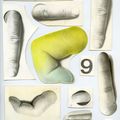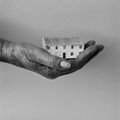Marcelo Brodsky
Nuke

Exhibition Details
In 2019, during the Trump presidency, Argentine artist Marcelo Brodsky decided to intervene in the image of a nuclear explosion while the renewal of nuclear agreements between the United States and Russia was not being signed. His goal was to remind us that disarmament is the best protection against those weapons. Something that might have sounded even rhetoric in those days, and now assumes a completely different meaning due to the current geopolitical tensions. The idea behind the artist's work is to tell history to the new generations and engage in social campaigns through the immediacy and beauty of the visual language. His research of archival images, their activation through colour, and the use of text are not only able to synthesise key moments of the history of the 20th century but also represent a great instrument to ask ourselves how we imagine the future.
About the Author
Marcelo Brodsky (Argentina, 1954) is an artist based in Buenos Aires. His practice focuses on the physical and psychic effects of civil and human rights abuses during Argentina's Dirty War (1976-83), the period in which he was forced into exile. Since Buena Memoria, a photographic essay from 1997 which investigates the effects of state terrorism in Argentina, Brodsky continued creating and exhibiting work centered around collective memory, oblivion and human rights around the world. Brodsky is an active member of the human rights organisation Asociación Buena Memoria. His work is part of major collections such as the Houston Museum of Fine Arts, the Tate Collection in London, Museo de Arte Moderno in Buenos Aires and many others.
 The Merge →
The Merge → The Weight Of The Word →
The Weight Of The Word → Ukrzaliznytsia →
Ukrzaliznytsia → Umbai →
Umbai → Summer Glow →
Summer Glow → Collective Show →
Collective Show → Dummies & Books from FOLIO →
Dummies & Books from FOLIO → Asphodel Songs →
Asphodel Songs → Good Hope →
Good Hope → How To Raise A Hand →
How To Raise A Hand → La Linea D'Acqua →
La Linea D'Acqua → Mythic Humanoids →
Mythic Humanoids → Neuromantic →
Neuromantic → Nothing Personal →
Nothing Personal →